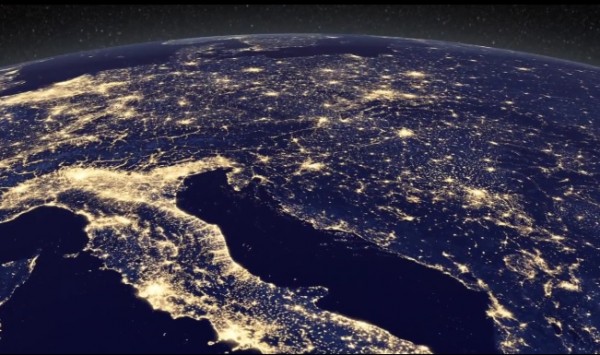NASA Reveals Stunning Space Photos of How Holiday Lights Brighten Cities
| Ana Verayo | | Dec 18, 2014 05:30 AM EST |
(Photo : NASA Goddard Space Flight Center) U.S. holiday lights are so bright astronauts and satellites can see them from space.
NASA and the National Oceanic and Atmospheric Administration (NOAA) recently revealed new satellite photos that show holiday lights on the ground are plainly visible way up in space.
It also presented a unique peek into different cultures around the world.
Beginning 2012, scientist Miguel Roman and his team from NASA's Goddard Space Flight Center examined satellite photos of the night time light output of 70 U.S. cities to study and observe greenhouse gas emissions, specifically in urban areas.
Like Us on Facebook
They noticed the uncanny phenomenon of lights glowing brighter after Black Friday and towards New Year's Day. In the last two years, the team observed that suburban areas in the U.S. shine 20 to 50 percent brighter at night during the holiday season compared to the rest of the year.
They also observed similar night time light celebrations around the Middle East during the month long Ramadan season where social gatherings occur at night after day-long fasting. These Middle Eastern cities shine 50 percent more brightly at night when the Muslim holiday season is celebrated as opposed to other months of the year.
Since the U.S. is also home to diverse ethnic and religious groups, this type of festive holiday lighting seems to be a nationwide event. When Ramadan is celebrated in the Middle East, however, the lighting patterns are different for every country or region.
Saudi Arabian countries increased their night lighting output by as much as 60 to 100 percent in Ramadan. Turkish cities have a lesser usage of night time lighting. Lebanon, Iraq and Syria do not have any increase in lighting or decrease their lighting significantly during this Muslim holiday season.
In cities such as Cairo in Egypt during the Ramadan festivities, night light brightness varies in different towns and the poorest or most religious areas often do not use lights in strict observance of Ramadan. When the Eid al-Fitr celebrations start after the end of Ramadan, light use across the country increases among all socioeconomic standards.
This suggests religious and cultural traditions are pivotal in the demand for energy.
This satellite data not only pinpoints the source of major carbon gas emissions, but also offers new insights on how different cultural and religious celebrations can affect climate change.
TagsNASA Reveals Stunning Images How Holiday Lights Brighten Cities, NASA, NOAA, holiday lights seen from space, Ramadan, christmas, christmas lights view from space, NASA holiday lights space images
©2015 Chinatopix All rights reserved. Do not reproduce without permission
EDITOR'S PICKS
-

Did the Trump administration just announce plans for a trade war with ‘hostile’ China and Russia?
-

US Senate passes Taiwan travel bill slammed by China
-

As Yan Sihong’s family grieves, here are other Chinese students who went missing abroad. Some have never been found
-

Beijing blasts Western critics who ‘smear China’ with the term sharp power
-

China Envoy Seeks to Defuse Tensions With U.S. as a Trade War Brews
-

Singapore's Deputy PM Provides Bitcoin Vote of Confidence Amid China's Blanket Bans
-

China warns investors over risks in overseas virtual currency trading
-

Chinese government most trustworthy: survey
-

Kashima Antlers On Course For Back-To-Back Titles
MOST POPULAR
LATEST NEWS
Zhou Yongkang: China's Former Security Chief Sentenced to Life in Prison

China's former Chief of the Ministry of Public Security, Zhou Yongkang, has been given a life sentence after he was found guilty of abusing his office, bribery and deliberately ... Full Article
TRENDING STORY

China Pork Prices Expected to Stabilize As The Supplies Recover

Elephone P9000 Smartphone is now on Sale on Amazon India

There's a Big Chance Cliffhangers Won't Still Be Resolved When Grey's Anatomy Season 13 Returns

Supreme Court Ruled on Samsung vs Apple Dispute for Patent Infringement

Microsoft Surface Pro 5 Rumors and Release Date: What is the Latest?










